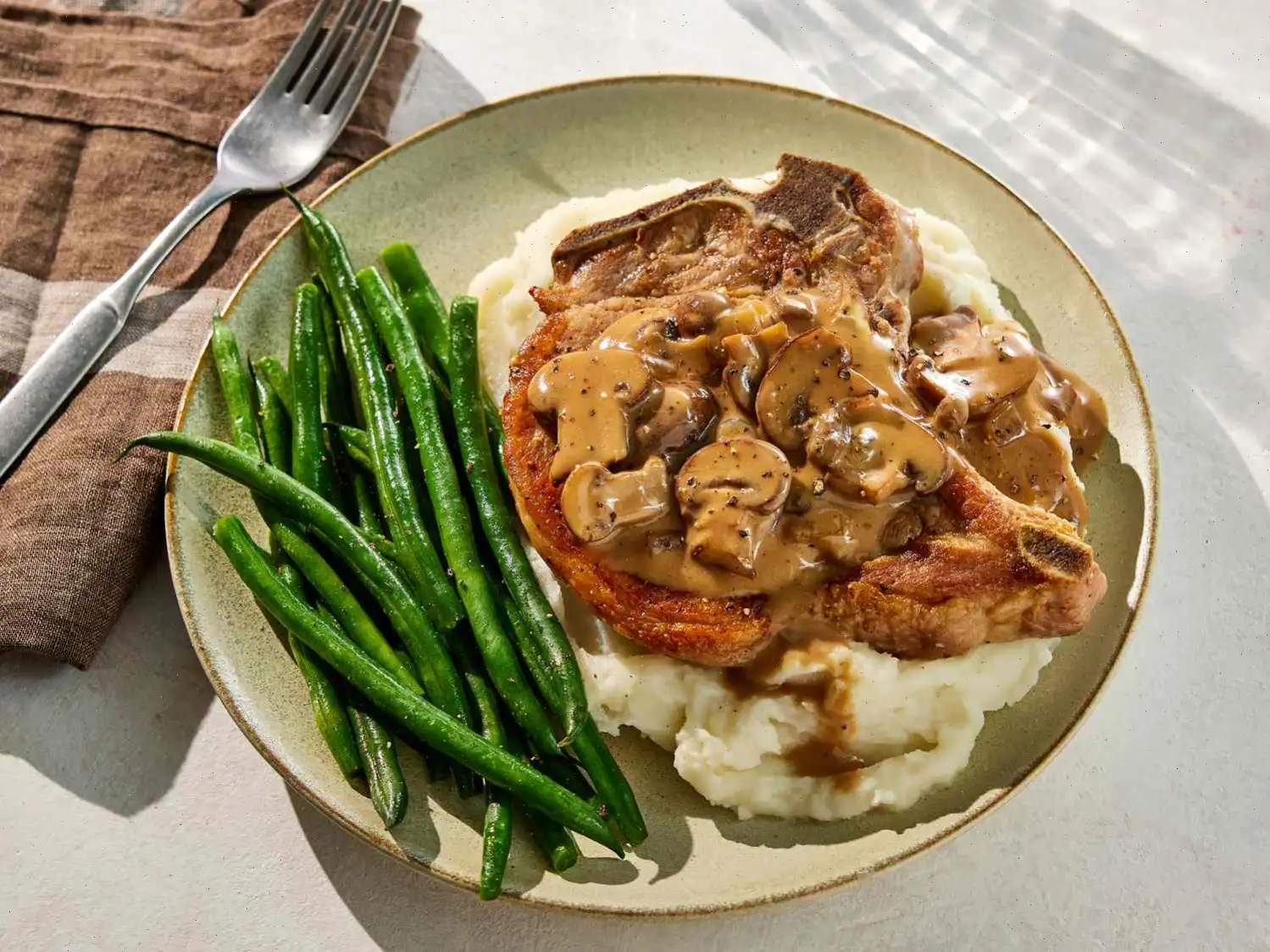
Sauteed Red Cabbage Recipe
Ingredients
This recipe was developed at its original yield. Ingredient amounts are automatically adjusted, but cooking times and steps remain unchanged. Note that not all recipes scale perfectly.
Original recipe (1X) yields 6 servings
- 2 tablespoons olive oil
- 1 small onion, sliced into petals
- 1 1/2 pounds red cabbage, shredded (1 small head)
- 1/4 cup apple cider vinegar
- 1 tablespoon stone ground mustard
- 2 teaspoons white sugar
- 1/2 teaspoon salt
- 1/4 teaspoon freshly ground black pepper
Directions
Step 1: Heat the olive oil in a large skillet over medium-high heat.
Step 2: Add the sliced onion and saut for about 2 minutes until it begins to soften.
Step 3: Add the shredded cabbage to the skillet, and saut for an additional 5 minutes until the cabbage starts to wilt.
Step 4: Stir in the apple cider vinegar, stone ground mustard, white sugar, salt, and freshly ground black pepper.
Step 5: Continue sauting the mixture until the cabbage reaches your desired tenderness, about 10 minutes. Stir occasionally to ensure even cooking.
Nutrition Facts
Per serving (based on 6 servings)
| Nutrition | Amount | % Daily Value |
|---|---|---|
| Calories | 90 | - |
| Total Fat | 5g | 6% |
| Saturated Fat | 1g | 3% |
| Cholesterol | 0mg | 0% |
| Sodium | 209mg | 9% |
| Total Carbohydrate | 11g | 4% |
| Dietary Fiber | 3g | 12% |
| Total Sugars | 6g | - |
| Protein | 2g | 4% |
| Vitamin C | 40mg | 44% |
| Calcium | 54mg | 4% |
| Iron | 1mg | 5% |
| Potassium | 330mg | 7% |
* Percent Daily Values are based on a 2,000 calorie diet. Your daily values may be higher or lower depending on your calorie needs.

Author: Nicole Russell
Published: April 3, 2024
Introduction
Sauteed red cabbage is a delicious and vibrant dish that blends the sharp tang of apple cider vinegar with the mellow sweetness of sugar and mustard. This easy-to-make side dish is perfect for accompanying grilled meats or smoked sausages, and it can even serve as a zesty topping for hot dogs, much like sauerkraut. This quick recipe yields a flavorful, slightly sweet and sour cabbage that is sure to brighten any meal.
History and Origins
The origins of sauteed red cabbage can be traced back to various European cuisines, where cabbage has been a staple vegetable for centuries. Cabbage, in its different forms, was cultivated by ancient civilizations, but it gained particular prominence in the cooking traditions of Central and Eastern Europe. Sauteed red cabbage, specifically, is often associated with German, Polish, and Dutch cuisines, where it is known as "Rotkohl" or "Rote Kohlsuppe." These dishes have been passed down through generations, evolving over time but maintaining their key components: cabbage, vinegar, and sugar.
Regional Features
In Germany, red cabbage is often simmered with apples, cloves, and cinnamon, giving it a sweet, spiced profile. The Dutch version sometimes includes raisins, further enhancing its sweetness. In the United States, the dish is typically prepared with mustard and vinegar, which lend it a more tangy and slightly spicy flavor, distinct from its European counterparts. Sauteed red cabbage can also be found in the kitchens of Scandinavian countries, where it is paired with rich, hearty meats like pork or venison.
What Makes It Different?
Sauteed red cabbage is similar to other cabbage-based dishes like sauerkraut, but it differs in flavor profile and preparation. Unlike sauerkraut, which is fermented and has a distinctly sour and tangy taste, sauteed red cabbage is cooked quickly with vinegar, mustard, and sugar, resulting in a more balanced, sweet-and-sour flavor. The key ingredient, red cabbage, contributes a beautiful color to the dish, making it an attractive addition to any plate. Additionally, sauteed red cabbage is often served fresh, as opposed to fermented or pickled versions, which makes it a quicker and more versatile option.
Where It's Typically Served
Sauteed red cabbage is commonly served as a side dish in many European and American meals. It pairs wonderfully with roasted meats, sausages, and even grilled chicken. In Germany, it is often served alongside traditional dishes like Schweinshaxe (pork knuckle) or sausages, while in the U.S., it is a great accompaniment to barbecue or a simple roast dinner. Its vibrant color and unique flavor make it an excellent complement to the richness of meats, and it can also be served atop hot dogs as a tangy alternative to sauerkraut.
Interesting Facts
- Red cabbage is not only tasty but also a nutritional powerhouse. It is high in vitamin C, fiber, and antioxidants, making it a healthy addition to any diet.
- In many cultures, cabbage is considered a symbol of prosperity and good luck, particularly around New Year's Day. In the U.S., for example, cabbage is often eaten on New Year's Day as part of a meal meant to bring financial fortune.
- The anthocyanins that give red cabbage its vibrant purple color are powerful antioxidants, believed to have anti-inflammatory properties and potential health benefits.
Recipe Ingredients
- 2 tablespoons olive oil
- 1 small onion, sliced into petals
- 1 1/2 pounds red cabbage, shredded (1 small head)
- 1/4 cup apple cider vinegar
- 1 tablespoon stone ground mustard
- 2 teaspoons sugar
- 1/2 teaspoon salt
- 1/4 teaspoon ground black pepper
Cooking Instructions
- Heat oil in a large skillet over medium-high heat. Add onion and saut for 2 minutes.
- Add cabbage and saut for 5 more minutes.
- Stir in vinegar, mustard, sugar, salt, and pepper. Saut until cabbage is as tender as you like, about 10 minutes.
Conclusion
Sauteed red cabbage is a simple yet flavorful dish that brings a burst of color and taste to any meal. Its combination of tangy vinegar, mustard, and sweet sugar creates a perfect balance that complements a variety of main dishes. Whether youre enjoying it with roasted meats or as a topping for hot dogs, its a versatile and delicious addition to your culinary repertoire.
FAQ about Sauteed Red Cabbage Recipe
Comments
Janet Davis
10/28/2022 08:51:29 AM
This dish was delicious, but it was quite tangy. To balance the sharp flavor, I included more sugar, which helped to tone it down. I believe using orange or apple juice in place of vinegar could also be a good alternative.








